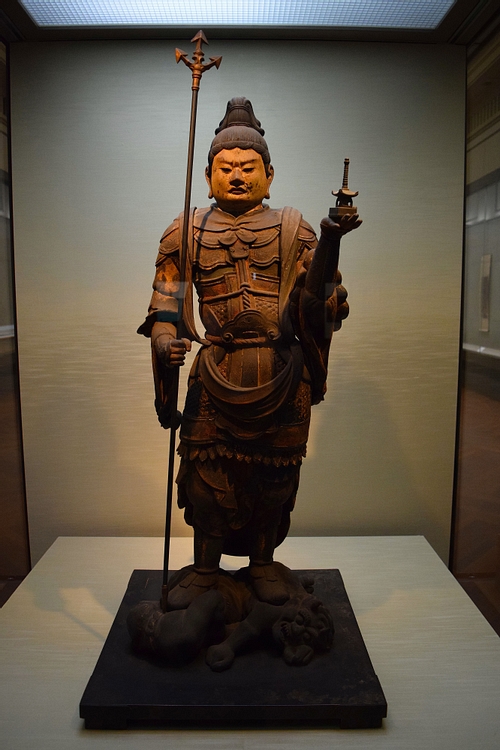Illustration
Made of wood with polychrome, cut gold leaf, and crystal eyes, this is one of the most remarkable statues from ancient Japan. The ink inscription eclosed in the statue of Bishamon Ten (Vaisravana) reveals that it was dedicated on the seventh day of the third month of 1162 CE, and it was kept at the Jurinin Jibutsudo Hall of the now defunct Nakanogawa Temple in Nara, Japan. It is one of the most prominent works from the late Heian period in the 12th century CE. With inlaid crystal eyes, which were a new technique at the time, this statue boass a style that seems fresh even today. This is one of the earliest Buddhist statues to use inlaid crystal eyes for a realistic and stunning effect. (Tokyo National Museum)
Cite This Work
APA Style
Wiener, J. B. (2017, December 19). Japanese Bishamon Ten Scuplture. World History Encyclopedia. Retrieved from https://www.worldhistory.org/image/7784/japanese-bishamon-ten-scuplture/
Chicago Style
Wiener, James Blake. "Japanese Bishamon Ten Scuplture." World History Encyclopedia. Last modified December 19, 2017. https://www.worldhistory.org/image/7784/japanese-bishamon-ten-scuplture/.
MLA Style
Wiener, James Blake. "Japanese Bishamon Ten Scuplture." World History Encyclopedia. World History Encyclopedia, 19 Dec 2017. Web. 16 Apr 2024.

